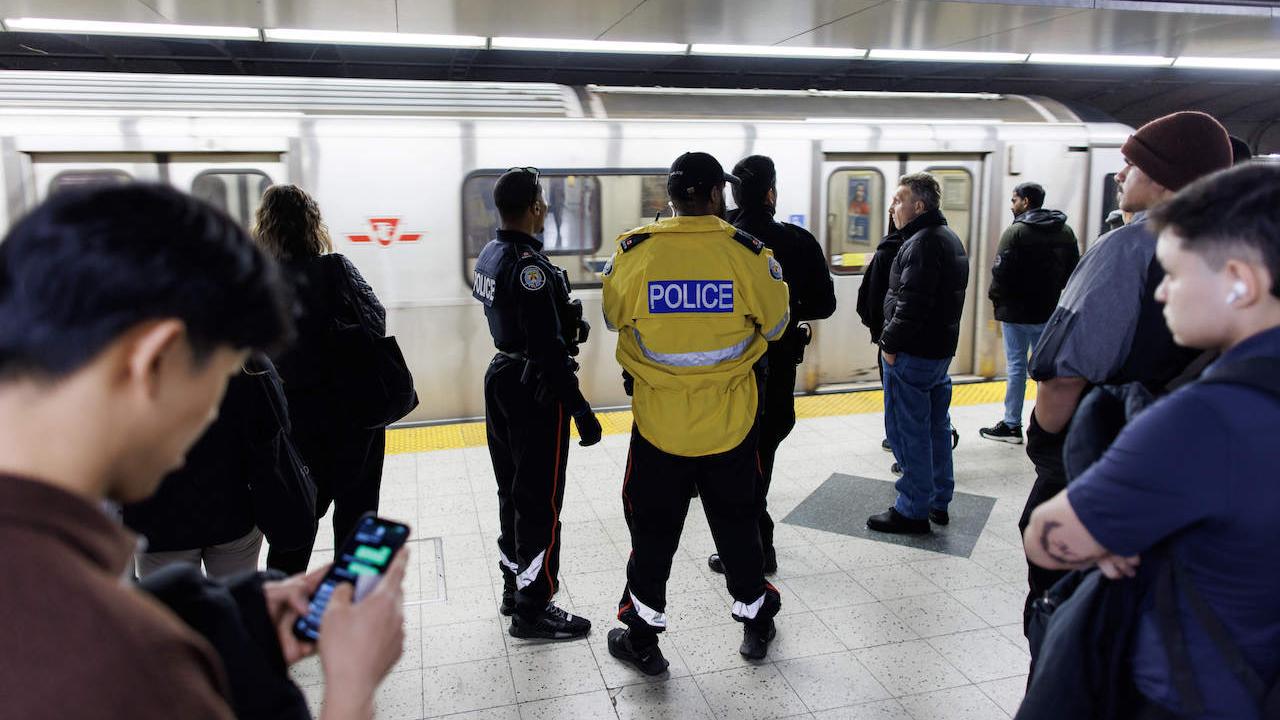In the lead-up to the June 26 mayoral by-election, the Toronto Region Board of Trade is calling on candidates to share plans on how they’ll take action on the key issues facing the city. This week, the board’s president and CEO, Jan De Silva, joins Karen Chapple, director of the School of Cities at the University of Toronto, to look at how our next mayor can work to improve public safety and safeguard our reputation as a world-class city.
Read this article on tvo.org, and visit our Mayoral By-Election campaign to learn What's at Stake.
But today, many Torontonians do not feel safe. Ever since a spate of attacks on the TTC shook our faith in our fellow passengers and in the ability of the system to protect us, there is a new and growing tension on the streets of Toronto.
What accounts for this shift? A TTC report showed that violence against passengers is up 60 per cent since 2019. But guess what? But other cities, like New York, are also seeing big increases in violent incidents on their transit systems. Cities around the world are facing similar pressures, dealing with post-pandemic mental-health issues in the face of crises of income inequality and housing affordability.
In Toronto, we can connect the mental-health crisis to a loss of social capital. A recent study by the Toronto Foundation found that, relative to before the pandemic, Torontonians are less likely to interact with others and have fewer family and friends to call on. Personal support systems are faltering — now more than ever, strong community support systems are needed.
Our next mayor must be ready from day one to renew our civic life and social infrastructure. Unless we act, we risk a vicious cycle of public-safety incidents and public retreat. If the city continues to feel unsafe, fewer people will walk and take transit, visitors will be less likely to spend their money at local attractions, and businesses, particularly in the downtown core, will struggle to make ends meet.
Simply put, a city cannot prosper if its citizens feel unsafe and disconnected from one another.
The University of Toronto’s School of Cities produced a downtown-recovery tracker earlier this year based on cellphone data across 63 North American cities. Toronto placed 55th, as just 47 per cent of the pre-pandemic population was returning to normal life. Similarly, TTC ridership was at just 55 per cent of pre-pandemic levels. Toronto’s full recovery post-pandemic is first and foremost about returning — customers, riders, office workers, business travellers, and tourists.
The solution is not only about policing, but it is partly about policing. A law-enforcement presence does have an impact; just as people slow down on the highway when they see a police car, they are less likely to attack someone in a subway station if an officer or TTC special constable is nearby. But, of course, this is a short-term solution. While it may make the TTC feel safer to many — and that is important — violence can simply move elsewhere. The long-term problems remain, and they are not only or even primarily about violence.
The rising number of public-safety incidents is rooted in the mental-health crisis, addiction, and chronic homelessness — all issues that were exacerbated by the pandemic. These are regional problems that require a comprehensive approach championed by the city but co-led and funded by the provincial government.
Building and maintaining a safe city requires working across sectors to address injustices, exclusion, and systemic inequities in our health and social infrastructure. Strengthening social infrastructure includes things like ensuring accessible public transit, investing in parks and community spaces, and enacting policies that encourage a culture of collective care and connection.
It requires leaders in all sectors, including the mayor, to act collectively across silos to address systemic inequities and the social determinants of health, including income, education, unemployment, food insecurity, housing, and working conditions. We know that community involvement and supports for people who are struggling are of critical importance as part of this strategy.
The 2023 Ontario budget included $425 million over three years to support mental-health and addictions services, and that’s a great start. But a permanent funding model, supported by a robust strategy agreed to by the province and the city, must be established.
The fact is, Toronto remains one of the safest major cities in the world. But there is important work still to do if we are to protect this reputation. The next mayor of Toronto can bring a cross-sectoral lens to this complex issue and use their convening power to bring together the necessary data, expertise, and community of support to meet the challenge.
Our reputation as a safe city is important, as it leads to business growth and investment, but what’s truly at stake is the civic confidence that makes us want to take part in all the city has to offer. Confidence and engagement are hard to recover once gone, and no city can thrive if they’re lost.
